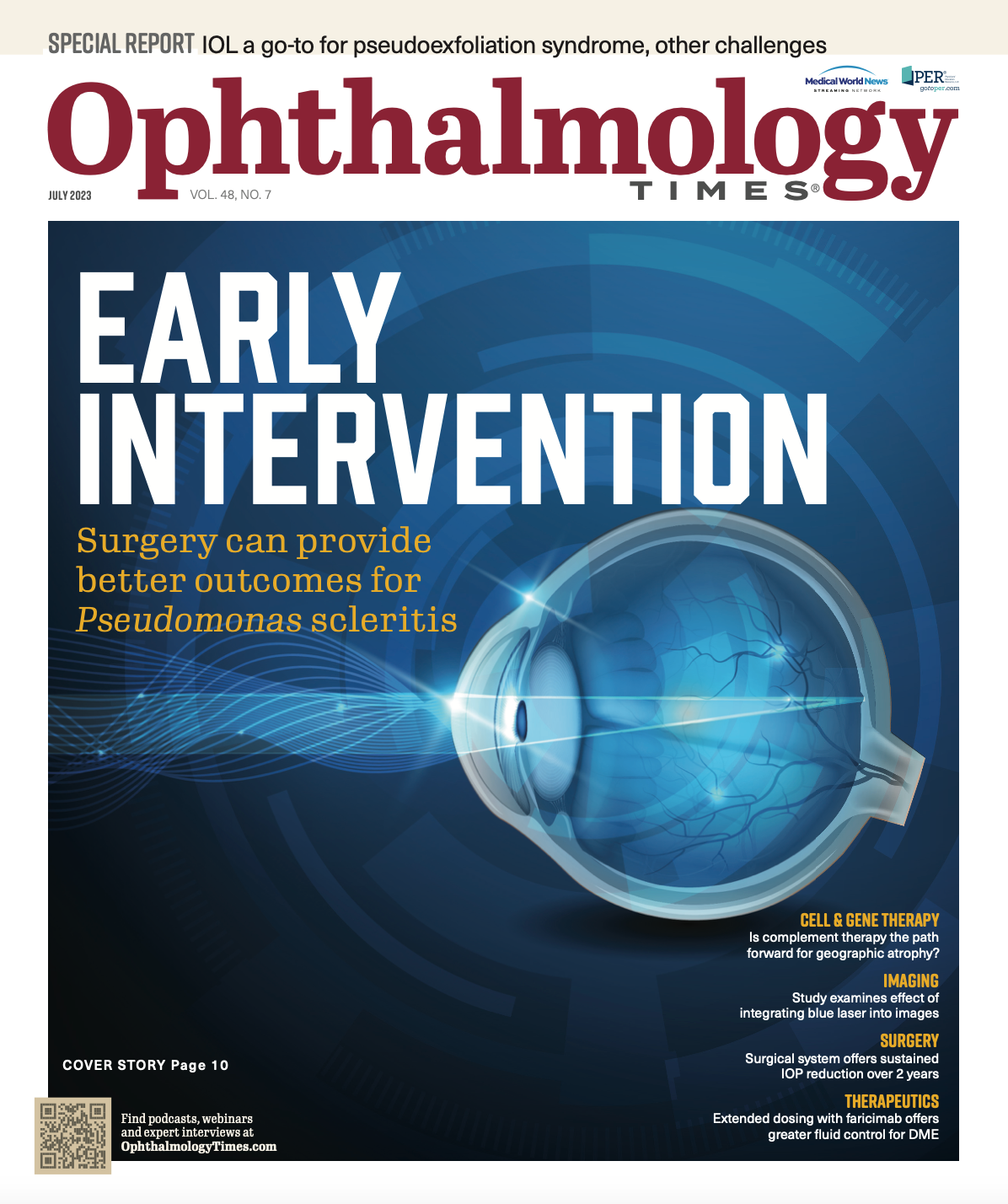Publication
Article
Digital Edition
Pearls to ensure safe, efficient phacoemulsification procedures
Author(s):
(Image Credit: AdobeStock/REDPIXEL)

Reviewed by I. Paul Singh, MD
Advanced technologies are available to help maintain a stable anterior chamber and optimize surgical outcomes in patients undergoing phacoemulsification. In this article, I. Paul Singh, MD, president of The Eye Centers of Racine & Kenosha in Wisconsin, shared the details of 2 cases that illustrate how to best manage potential intraoperative complications.
Avoiding postocclusion surge
Singh explains that an advantage of phacoemulsification technologies is the ability to keep the anterior chamber stable, which facilitates more room for surgical manipulations in the eye and keeps the posterior capsule sufficiently far away to prevent posterior capsule rupture. During postocclusion surge, the phacoemulsification tip is occluded by nuclear material, aspiration is prevented by the absence of vacuum, and the irrigation fluid continues to enter the eye, but nothing leaves the eye. In this scenario, the pressure increases in the anterior chamber and the resultant negative pressure causes the tubing to collapse.
When this scenario reverses itself (ie, emulsification occurs and the nuclear piece is fragmented and aspirated), the phacoemulsification tip opens. “Suddenly, there is a negative pressure gradient in the tubing, all the fluid leaves the eye, and the pressure drops, which results in chamber collapse,” Singh explains.
Signs of the impending collapse include iris prolapse with a bouncing motion. This can be subtle or so significant that the capsule moves forward into the phacoemulsification tip. In the latter event, the posterior capsule can rupture, Singh explains. He advises surgeons to not exit the eye until viscoelastic is injected into the anterior chamber to protect the capsule and prevent the vitreous from moving forward.
Singh also advises that surgeons proceed gingerly. “I am very gentle with irrigating/aspirating as much of the cortical fibers as possible without disrupting the vitreous and the high anterior hyaloid face. In these cases, the lens can be put in the bag or the sulcus depending on surgeon comfort,” he says.
Technologies to mitigate surge
Singh said pressurized fusion, a vacuum-based system that senses the vacuum level is used. “With this technology, I know how much fluid is leaving the eye and I can proactively irrigate and put more fluid into the eye,” Singh says. “This is a proactive approach to preventing postocclusion surge.”
Synchronized fluid exchange is a recently developed technology that can independently control vacuum and fluidics.
Case: Counteracting the effects of tamsulosin hydrochloride
Singh demonstrated how these technologies function for a patient who had been treated with tamsulosin hydrochloride (Flomax; Boehringer Ingelheim) for benign prostatic hyperplasia. The patient had hyperopia and had a clinically relevant cataract. In this case, a high vacuum level was used but the chamber remained. He divided the nucleus in half and brought it to the anterior chamber.
“Having a combination of vacuum control and pressurized infusion is important because my preference is to keep the phaco[emulsification] tip in the middle of the eye,” Singh says. “Using vacuum, I can get the nuclear pieces to approach the tip. I used high vacuum [level], ie, 600, 650, and 670 mm Hg, but the iris was not bouncing and the chamber remained stable.”
Singh says he likes that vacuum control allows the surgeon to stay in the middle of the eye. Even during irrigation/aspiration, he stays close to but not under the anterior capsule. He was able to go beneath the iris where the tip was not visible and stay in the middle of the eye with the fragments approaching the tip. The chamber was stable over the course of the procedure, without excessive infusion.
Pressurized infusion using a vacuum-based system provides the ability to know how much fluid is leaving the eye and instructs the phacoemulsification machine to infuse more fluid into the eye. More irrigation pressurizes the irrigation to allow the eye pressure level to be higher. This technology prevents the chamber from becoming excessively shallow.
Case: Small pupils
Singh also demonstrated control of the eye in a patient with small pupils who had also been treated with tamsulosin hydrochloride. He said the general advantage of a vacuum-based system is that it facilitates control of the nuclear fragments.
In such a patient, a surgeon may consider that they should use iris hooks or some pupil expansion devices. “However, I’m able to stay in the middle of the eye and not have to worry as much about the pupil size decreasing. It’s not enlarging, but it’s staying stable. The chamber also is stable, and I can use vacuum to bring the nuclear pieces to the tip. In fact, I took my second instrument out, and the nuclear pieces approached the tip very slowly only by using bursts of energy referred to as multiburst mode,” Singh says.
Singh explains that by using the foot pedal, he only increases the on-time and not the phacoemulsification power to remove even minute fragments with very little phacoemulsification energy. In addition, even in irrigation/aspiration mode, the tip is close to the anterior capsule border and visible at all times.
I. Paul Singh, MD
E: inderspeak@gmail.com
Singh is president of The Eye Centers of Racine & Kenosha in Wisconsin.

Newsletter
Don’t miss out—get Ophthalmology Times updates on the latest clinical advancements and expert interviews, straight to your inbox.




